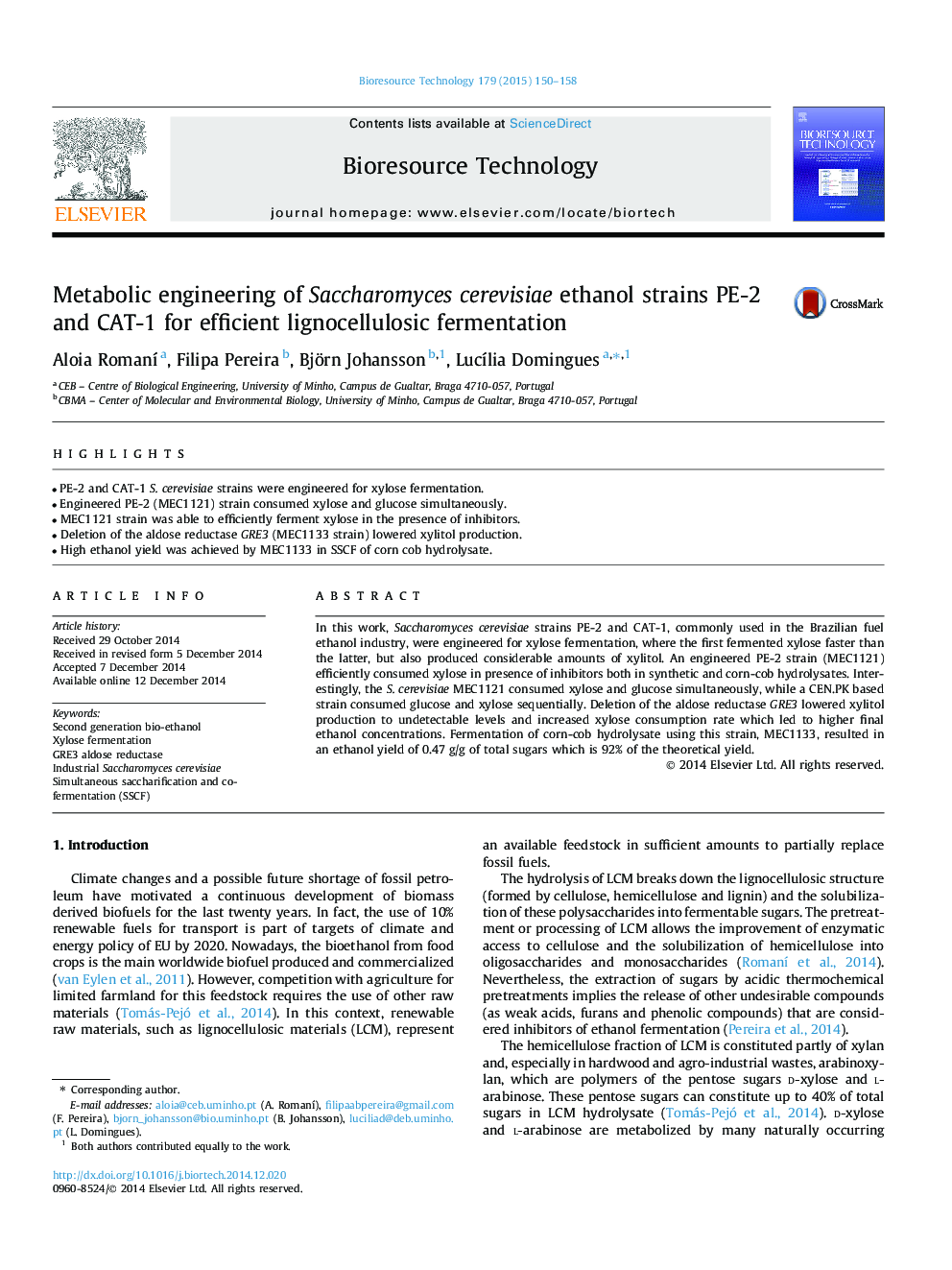| کد مقاله | کد نشریه | سال انتشار | مقاله انگلیسی | نسخه تمام متن |
|---|---|---|---|---|
| 680163 | 1459964 | 2015 | 9 صفحه PDF | دانلود رایگان |

• PE-2 and CAT-1 S. cerevisiae strains were engineered for xylose fermentation.
• Engineered PE-2 (MEC1121) strain consumed xylose and glucose simultaneously.
• MEC1121 strain was able to efficiently ferment xylose in the presence of inhibitors.
• Deletion of the aldose reductase GRE3 (MEC1133 strain) lowered xylitol production.
• High ethanol yield was achieved by MEC1133 in SSCF of corn cob hydrolysate.
In this work, Saccharomyces cerevisiae strains PE-2 and CAT-1, commonly used in the Brazilian fuel ethanol industry, were engineered for xylose fermentation, where the first fermented xylose faster than the latter, but also produced considerable amounts of xylitol. An engineered PE-2 strain (MEC1121) efficiently consumed xylose in presence of inhibitors both in synthetic and corn-cob hydrolysates. Interestingly, the S. cerevisiae MEC1121 consumed xylose and glucose simultaneously, while a CEN.PK based strain consumed glucose and xylose sequentially. Deletion of the aldose reductase GRE3 lowered xylitol production to undetectable levels and increased xylose consumption rate which led to higher final ethanol concentrations. Fermentation of corn-cob hydrolysate using this strain, MEC1133, resulted in an ethanol yield of 0.47 g/g of total sugars which is 92% of the theoretical yield.
Journal: Bioresource Technology - Volume 179, March 2015, Pages 150–158